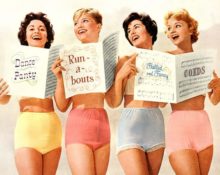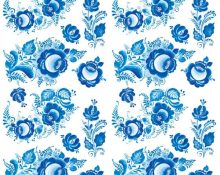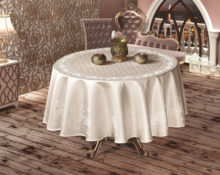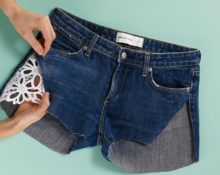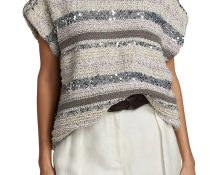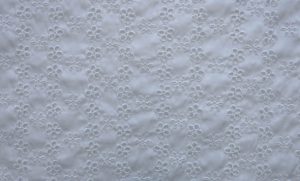
tk.ua
What is stitching - it is a natural fabric made of 100% cotton. Its special beauty lies in the small holes in the fabric, which are trimmed with threads to match the material. Thanks to this, the stitched fabric does not look clumsy, but on the contrary, it impresses with its sophistication.
The patterns on the canvas can be very diverse - geometric, floral, abstract. First, they are embroidered with thin threads, and then, using special equipment, holes are cut inside the patterns, the edges of which have already been processed earlier.
There is a distinction between lace-stitching and stitching-fabric - what is it and how do they differ?
Proshva - lace appeared in the 15th century. Then in Western Europe they began to produce openwork embroidery. The width of the lace reaches several centimeters. It is used to decorate clothes and other items.
Stitched fabric, what is it, is the same fabric, but wide enough for cutting a dress. This is the difference between lace and stitched fabric.
A distinctive feature of stitched fabric is the variety of colors, styles and patterns.
The stitching material, photos of which are given below, like any fabric, has its advantages and disadvantages.
Let's start with the advantages:
- Visual beauty, lightness and airiness.
- Comfortable to wear and hypoallergenic.
- Natural in composition. Soft and pleasant.
- Highly breathable thanks to the natural composition and holes in the fabric.
- Excellent absorption and release of moisture.
- With careful care, it retains its original appearance for a long time and does not fade.
This material has fewer disadvantages, but they are present:
- When worn, the fabric wrinkles like all natural fabrics.
- The seam doesn't stretch. If worn for a long time, it may become damaged.
Embroidery on stitched fabric, what is it and how does lace differ according to the method of weaving? There are a lot of embroidery options. Some are performed using classical technology, and some using special technology:
- Richelieu style is embroidered only on special types of fabrics. This is muslin, nylon, cambric or percale. The contours of the applied designs are duplicated with thin threads using an overcast stitch, then holes are cut.
- Hartanger is made on bleached linen. The first two stages are performed as in Richelieu, and in the third, a web of threads is created on top of the cut holes.
- Needle lace is made on thin cambric and organza. Tracing paper with a pattern is applied to the front side of the fabric and an ornament is stitched on top. Then the tracing paper is removed.
- Tatting embroidery - patterns are woven from threads specially twisted together.
- Guipure style, consisting entirely of transparent lace, embroidered on a mesh.
- The most airy is Openwork. It consists of holes of different shapes.
In the old days, stitching was made only from natural materials.
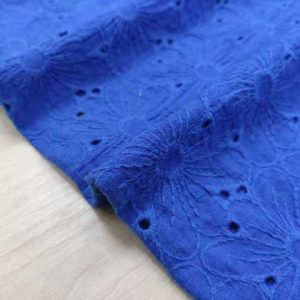
tk.ua
In the modern world, in order to reduce the cost and improve certain qualities of matter, synthetic fibers are sometimes added to it.
Typically viscose or lycra fibers are used. This makes the lace fabric more elastic and less wrinkleable.
Openwork fabric is used in sewing women's and children's clothing. The openwork material embroidered with lace looks very impressive, and clothes made from it add sophistication and charm to a woman’s look.
All kinds of women's clothing, underwear, tunics for the beach, nightgowns, wedding and evening dresses are made from it.
Stitching is used in clothing decoration and for finishing home textiles.
To preserve your delicate product, you need to follow a number of care tips:
- Wash cambric items in warm water up to 40°C with mild detergents, by hand. Wring out gently, without twisting the fabric too much.
- Products made from thicker cotton can be washed in a washing machine as usual at t=40. Press at minimum speed.
- Do not bleach. Wash off stains by hand and load into the machine.
- Dry horizontally until slightly damp. Iron on medium heat through the fabric.
When caring for items, always take into account the manufacturer's recommendations and the composition of the fabric. Then your things will serve you for many years.


 0
0